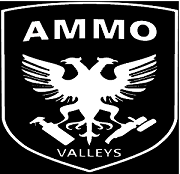small rifle primers
what are small rifle primers
Small rifle primers are small metal components used in firearms to initiate the ignition of the gunpowder and propel the bullet out of the barrel. They are typically used in small caliber rifles, such as .22 caliber rifles, and are an essential part of the ammunition. Small rifle primers consist of a metal cup, an anvil, a priming compound, and a moisture-resistant sealant. When the firing pin strikes the primer, it ignites the priming compound, which then ignites the gunpowder in the cartridge case, creating the necessary pressure to propel the bullet forward.
The small rifle primers are a device that is responsible for taking the propellant combustion that will help to push the projectiles out of the gun barrel.
Earlier the primer was essentially the exact chemical that is the main propellant that can pour into an external flash pan.
how are small rifle primers produced
The production process for small rifle primers is similar to that of shotgun primers, but there may be some variations in the materials used and the size of the components. Here is a general overview of how small rifle primers are produced:
1. Raw Materials: The main components of small rifle primers include a metal cup, an anvil, a priming compound, and a moisture-resistant sealant. The metal cup is typically made of brass or steel.
2. Cup Formation: Similar to shotgun primers, the metal cups for small rifle primers are formed using a cupping process. Sheets of brass or steel are punched out into circular discs, which are then shaped into cups using dies and presses.
3. Anvil Insertion: Anvils made of non-ferrous metals like nickel or copper are inserted into the primer cup to provide support for the firing pin impact.
4. Priming Compound: The priming compound for small rifle primers is also a mixture of sensitive chemicals that initiate ignition. It may have a slightly different composition compared to shotgun primers, but it generally includes lead styphnate, barium nitrate, and other additives. The priming compound is poured into the primer cup, covering the anvil.
5. Moisture Resistance: A moisture-resistant sealant is applied to the primer cup to protect the priming compound from moisture. This sealant can be made of lacquer or other specialized materials.
6. Drying and Curing: The primer cups filled with priming compound and sealed are dried and cured to harden the compound and ensure stability over time. Heating is typically used to remove moisture and solidify the compound.
7. Testing: Small rifle primers undergo rigorous quality control tests to ensure reliability and consistency. They are tested for sensitivity, ignition performance, and resistance to environmental factors.
8. Packaging: Once the small rifle primers pass quality control tests, they are packaged in suitable boxes or trays for storage and transportation. The packaging is designed to protect the primers from accidental impact or moisture exposure.
As with shotgun primers, safety protocols are strictly followed throughout the production process of small rifle primers due to the handling of potentially hazardous materials.
Quantity Information:
- Box of 1000: 10 Sleeves of 100
- Box of 5000: 5 boxes of 1000
what caliber uses small rifle primers:
Can small rifle primers be used in pistols?:
can you use small rifle primers for 9mm
Yes, you can usually get away with using small rifle magnum primers.
Primers have a metal outside, called a cup, and the small explosive charge used to ignite the powder in a cartridge. The bigger the primer, the thicker the cup, and the more or different explosive material is in the primer.
If you’re watching pressure, you can usually load a thicker primer, as long as your hammer and firing pin has the strength to ignite the primer.
Most pistols do have the strength to ignite primers much stronger than just a small pistol primer.
Rifle primers have a thicker cup then pistol primers so they’re normally just a bit longer then pistol primers.
That means that when you seat them they’ll stick out a bit which can be a dangerous condition, primers should be flush or just a bit below flush so they won’t contact anything unintentionally.
I’d say NO, you can’t use a rifle primer in a handgun round, not unless you cut the primer pocket deeper to allow the rifle primer to be fully seated.
are small rifle and small pistol primers interchangeable
Small rifle and small pistol primers are interchangeable.
Small rifle primers will add several FPS to your velocity thus a tad to your power factor.



Reviews
There are no reviews yet.